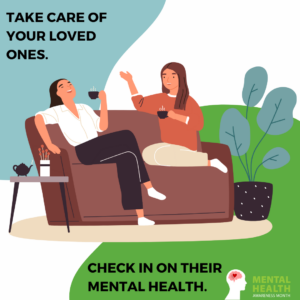
New research from the National Council for Mental Wellbeing shows that 83% of the behavioral health workforce believes providers will not be able to meet the demand for mental health or substance use treatment and care. The industry is also expected to reach a shortage of 31,000 workers by 2025. As we enter Mental Health Awareness Month, Governors are leading the way in tackling this workforce shortage to improve the resilience of healthcare systems and increase the number of people who can access critical care.
State Agency Coordination
Governors are driving coordination across state agencies by convening task forces to develop and implement strategies to expand their states’ behavioral health workforce. These groups leverage agencies dedicated to health, workforce development, human services, K-12 and postsecondary education – along with economic development officials – who in turn engage their respective stakeholder groups. For example, Idaho Governor Brad Little established the interagency Idaho Behavioral Health Council to create a strategic plan for the state’s behavioral health system, including a behavioral health workforce plan.
Training Pathways
Governors are also investing in training pathways and other supports and incentives to fortify the behavioral health talent pipeline. In Ohio, Governor Mike DeWine dedicated $85 million to provide paid internships, scholarships and cost relief for those who pursue licensure or certification to help behavioral health professionals obtain credentials quickly and affordably. The Oregon Behavioral Health Workforce Initiative also providing a variety of incentives to attract a diverse workforce, including scholarships, student loan repayment, childcare and housing assistance, and recruitment and retention bonuses.
NGA Projects
The National Governors Association Center for Best Practices (NGA Center) recently established the Next Generation of the Healthcare Workforce Knowledge Exchange Network, which grew out of a 2022 Learning Collaborative focused on developing the healthcare workforce in states. The Knowledge Exchange Network is comprised of 22 states and territories, centered on helping states advance their recruitment and retention strategies for the healthcare workforce, including specific priorities that support the behavioral healthcare workforce. Network states have access to a healthcare workforce toolkit, attend in-person convenings and virtual webinars to engage in peer-to-peer learning, and engage in technical assistance projects with the NGA Center.
The NGA Center, with support from the Centers for Disease Control and Prevention, is working on a roadmap that will identify policies and best practices for implementing a wide range of care and treatment strategies to address overdose. The roadmap will be organized by four pillars: prevention, harm reduction, treatment and recovery, and expanding services along the continuum will require states to have the right workers – and the right number of workers – to deliver the spectrum of services.
NGA Chair’s Initiative
NGA Chair New Jersey Governor Phil Murphy and Michigan Governor Gretchen Whitmer hosted the third convening of the NGA Chair’s Initiative: Strengthening Youth Mental Health, in Detroit, Michigan, from April 20-21, 2023. State contingents were joined by over 60 diverse policy and subject matter experts and private sector leaders to discuss the third pillar of the Chair’s Initiative: Access and affordability of quality treatment and care, including a panel on workforce development.
The NGA Center also convenes the State Trauma and Resilience Network (STRN), formed out of a 2021-2022 Learning Collaborative on Adverse Childhood Experiences (ACEs). The network is comprised of Governors’ advisors and agency officials that work with their Governors on trauma informed care and resilience, and the group focuses on emerging topics related to ACEs and trauma, including the behavioral health workforce and the effects of trauma across the lifespan.
The NGA Center is also a longtime partner in the State Exchange on Employment and Disability (SEED), a unique state-federal collaboration facilitated by the U.S. Department of Labor’s Office of Disability Employment Policy. The goal of this project is to support state and local governments in adopting and implementing inclusive policies and best practices that lead to increased employment opportunities for people with disabilities, leading to the creation of a stronger, more inclusive American workforce and economy. The SEED Mental Health Matters: National Task Force on Workforce Mental Health Policy brings together state policymakers to identify, discuss and advance policies in four key areas:
- Nondiscrimination, parity and benefits
- Underserved rural, racial and ethnic communities
- Behavioral health workforce shortages
- Workplace care and supports
Following a series of facilitated dialogues and consultation with subject matter experts throughout 2023, the SEED Mental Health Matters Task Force will publish state policy options in these four areas.
Implications of the Behavioral Health Workforce Shortage

Behavioral health workforce shortages can make it hard for people to access behavioral health services in several ways. Fewer providers mean fewer people can receive help and may limit the number of providers within a specific health insurance network, meaning there are not enough accessible providers for health plan members despite insurers’ best efforts to create comprehensive networks. Since the demand for behavioral health providers of all types is high due to shortages, some providers do not accept health insurance as reimbursement rates are lower than what they can charge self-pay patients. Unmet demand for behavioral health services likely contributes to even more providers not accepting health insurance, meaning they would be out-of-network and patients would need to pay out-of-pocket to see them. All of these factors are compounded in rural and other underserved areas across the country.
Knowing many who receive services for substance use disorders and other behavioral health conditions are Medicaid-eligible, states will also need to consider how these individuals will access services as states focus on expanding the behavioral health workforce broadly.
Emerging Solutions
Governors can work with state health departments and Medicaid plans to expand behavioral health services within primary care settings. This requires training among primary care providers to recognize and treat behavioral health conditions. States may also consider participating in interstate compacts for licensing reciprocity, such as the Counseling Compact that allows professional counselors licensed and residing in a compact member state to practice in other compact member states.
Governors are working with state licensure boards and state legislatures to ensure licensure requirements provide opportunities to develop new provider types such as peer support and bachelor’s trained specialists. Several states have defined roles and training requirements for behavioral health support specialists who are workers that provide behavioral health services in a variety of settings.
Governors are also expanding efforts to recruit the next generation of workers, providing advancement opportunities for those already in the field, and ensuring education and health systems provide more clinical and other training opportunities. Ensuring partnership across agencies and with private sector stakeholders is crucial to the success of these efforts.
At a time when there is a growing need for behavioral health services across a spectrum of provider types, Governors continue to identify creative and innovative solutions that reduce behavioral health workforce shortages.
This article was developed by NGA staff Eli McCabe, Sophia Yager, Anna Heard, Marianne Gibson, Shelby Hockenberry and Rachael Stephens Parker. To learn more about Governors’ work in this area please contact communications@nga.org.












